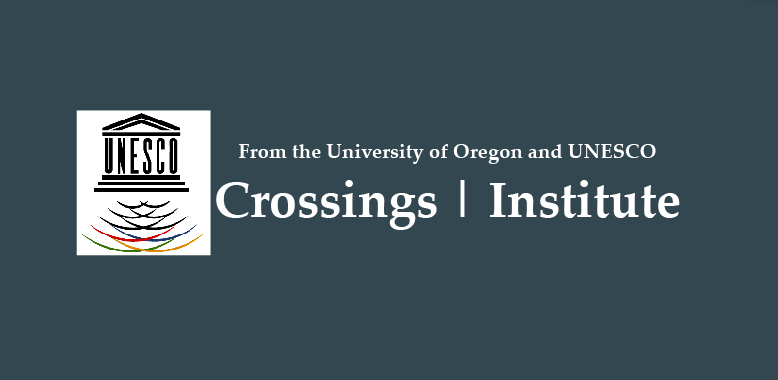An income gap that, despite Bernie Sanders’ best efforts, yawns perversely wide. Harrowing rates of gun violence. Racial and religious tensions running high. Call this country afflicted — yet despite our problems, swarms of foreign nationals still yearn to call the United States home.
From Kramatorsk, a city in the unstable Donetsk province of Ukraine, Nikita Gostev and his family hope to settle here in docile Oregon. When last I wrote about the 20-year-old in June, he opened up to me about his father being kidnapped and beaten by the authorities when they were in their country of origin.
Since my return from Ukraine two summers ago, I’ve taken a keen interest in the affairs of displaced persons. I use that broad term for people who flee their homes instead of the colloquial “refugees” for a reason. The federal government requires both refugees and asylum seekers — those who apply for sanctuary once in the U.S. or at a port of entry — to prove persecution or fear of persecution based on social, political, racial, religious or nationalistic grounds, according to the Immigration and Nationality Act.
As asylees in the midst of the application process, Nikita and his family lack some of the benefits that they might have as refugees. According to the United States Citizenship and Immigration Service, refugees are given loans to cover the cost of travel to the United States and are allowed to work immediately upon arrival. Money had to be raised to bring the Gostevs over, and they cannot work right now — but more on that in a minute.
Dan Larsson, an immigration lawyer working the Gostev case in Bend, explained the difference between refugees and asylees like Nikita. Larsson knows immigration: He moved to the United States from Sweden and has spent time in Montana, Washington and Oregon. The 53-year-old got into the business to help others pursue the opportunities that drew him here in the first place. There’s a general lack of understanding when it comes to immigration law — and that bothers Larsson. But there’s a lot to be confused about.
Consider the asylum clock. After at least 150 days of filing an application for asylum in the U.S., you are allowed to apply for a work visa with which you can apply for any job under the stars and stripes. Though he doesn’t keep up with the employment his clients often procure, Larsson ventured a guess: “You might find a well-paid translation job.”
For Nikita, who was in college studying software development in Ukraine, the dream job is in technology. Maybe Google or Hewlett-Packard. He said he has more of a chance to find such a job here than in Ukraine. His mother, Angela, dressed hair in her home country, and may do so again in the United States. Nikita expects his family will have permission to get jobs by Christmas. He said, “We will finally get the work permit and we will have a little bit more freedom.”
Fortunately for the Gostevs, families in central Oregon have been gracious enough to open their homes. But imagine the plight of those left to scratch out an existence in the shadows of our towns and cities. Federal law stops asylum seekers from working during the 150-day period. Add the 30-day work permit application approval period, and asylum-seekers face a total of at least six months’ mandatory unemployment, unless their asylum application is approved in that time.
After she read this dispatch, my partner was incensed about how people are supposed to survive in the interim. She exclaimed, “On the streets?”
She’s not alone in that train of thought. “The U.S. government leaves many asylum seekers little choice other than begging or working illegally to survive,” said Bill Frelick, director of the refugee program at Human Rights Watch, on the group’s website. “The work and aid restrictions imposed on asylum seekers, apparently to discourage frivolous applications, harm and degrade the very people who most need support and protection.” According to Human Rights Watch, America is by itself among developed countries in providing hardly any aid and no work eligibility to people wading through the asylum process.
What about the small amount of assistance that is available? According to U.S. Code, an “alien” who has not been granted asylum or refugee status is ineligible for national public benefits except in the most dire of emergencies, in which case they might have a chance to procure assistance from the state.
Under the Refugee Act of 1980, the executive branch sets the number of refugees our country will accept each year. In Berlin this September, Secretary of State John Kerry announced the United States will take in 85,000 refugees in the 2016 fiscal year, up from roughly 70,000. That’s an impressive 21 percent increase, but still not enough given the scale of today’s raging conflicts.
For perspective, this new resettlement quota for this expansive country is only a few thousand people higher than the population of Bend. We’ve had a much higher ceiling in the past: for fiscal year 1995, the admissions bar was set at 112,000, according to the Report to Congress on Proposed Refugee Admissions for Fiscal Year 1995 — this just a few years after the fall of the Soviet Union.
With the influx of refugees into Europe and the Paris attacks, xenophobes such as Donald Trump are whipping up worry about the cloaked migration of terrorists into America. Yet every person who comes through this land — even visitors — has to go through a security background check and fingerprinting, said Larsson.
As a foreign national, you’re referenced through government databases coordinated across the globe to check your records, Larsson told me, though countries with poor records systems might falter. An immigrant himself and a man of the law, he understands how rigorous the system is. “But it’s not perfect,” he admitted. To get the message across that refugees are vetted intensively, the White House has crafted an easy-to-read online graphic detailing the process. Find it here: https:// goo.gl/4OnA8.
Couldn’t the Gostevs just go to west Ukraine? The city of Lvov is gorgeous come summertime. But as I’ve written before, the family of four tried to live in the west and south of Ukraine. Discrimination followed them around the country. They could not rent a house, because Kramatorsk is an eastern city and people had said to them, “You’re from the eastern part (of the country) — you support the Russians.”
The yearning for a safe country to call home will not go away. In many aspects, our system of sanctuary is as convoluted as it is inefficient for those like Nikita and his family who want a peaceful place to live. Let’s call on the federal government to institute aid programs that would ease the transition for persons displaced by conflict into the United States. We must raise the quota for refugees substantially. And I can’t help but echo Human Rights Watch’s recommendation to Congress that we allow asylees the option to apply for work permits and asylum at the same time.
Read the column by Crossings Institute research fellow Jonathan Bach in The Register-Guard of Eugene, Ore., here. The views expressed herein do not necessarily reflect those of the University of Oregon-UNESCO Crossings Institute.


